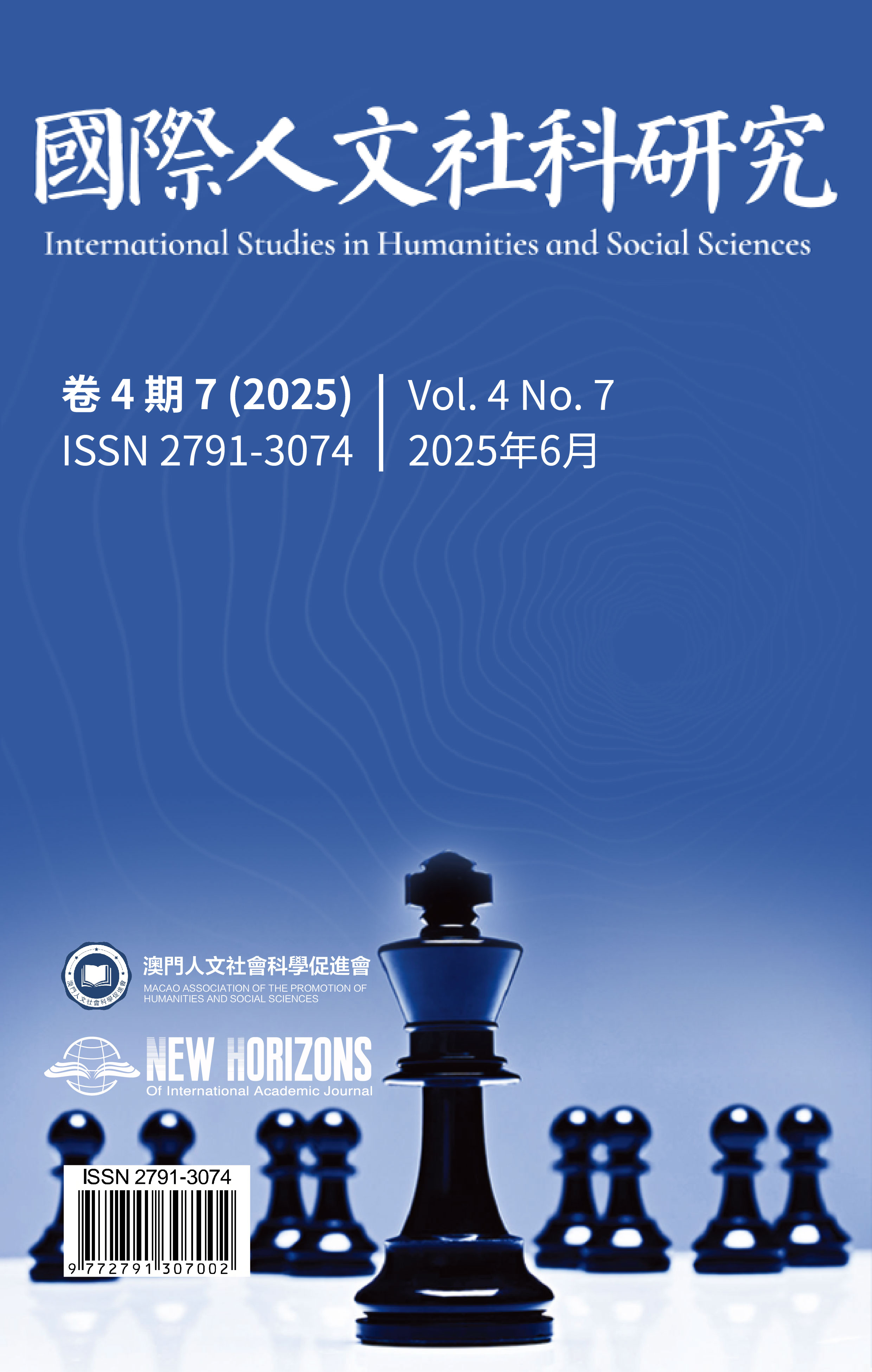Research on the Impact of Population Flow in the Pearl River Delta Urban Agglomeration on Economic Growth
DOI:
https://doi.org/10.63944/hhcx1f68Keywords:
Population mobility;Pearl River Delta urban agglomeration; Regional economic developmentAbstract
Since the reform and opening up, the economy of Guangdong Province has continued togrow rapidly, attracting capital, talents, technology and other production factors from all over thecountry. This paper takes the prefecture-level cities of the Pearl River Delta urban agglomeration asthe research object, and wants to reveal the relationship between population mobility and regional economic development.
Firstly, according to the data of the seventh census, this paper compares the size, gender and age characteristics, education level of the floating population, and grasps the population flow in the Pearl River Delta. Secondly, according to the statistical yearbook data of each city in 2023, the total GDP, per capita GDP and industrial structure of each city in the past 10 years are compared to understand the economic development of each city. Finally, it makes an empirical analysis of the relationship between the comprehensive situation of economic development, population flow and economic development in each city, and summarizes the findings and puts forward solutions to the existing problems.
This paper finds that in terms of population mobility, the floating population in the Pearl River Delta region is mainly from other provinces, mostly young and middle-aged men with junior and senior high school education, and economically developed cities attract more population inflows. In terms of economic development, in the past 10 years, the total GDP and per capita GDP of each city have been increasing, the gap between the cities in the Pearl River Delta has been widening, and the industrial structure has shown a small-scale stable fluctuation in the proportion of the primary industry. The proportion of the secondary industry decreased first and then increased, and the proportion of the tertiary industry increased first and then decreased. There is a significant positive correlation between population mobility and economic development. The more developed the economy, the larger the floating population. There are significant differences in economic development among different circles in the Pearl River Delta.
References
[1] E. G. Ravenstein. The Laws of Migration[J]. Journal of the Royal Statistical Society,1889,52:214-301. DOI: https://doi.org/10.2307/2979333
[2] P. Hauser, O. D. Duncan, eds. The Study of Population[M]. Chicago: University of Chicago Press,1959.
[3] 劉濤 , 齊元靜 , 曹廣忠 . 中國流動人口空間格局演變機制及城鎮化效應——基於 2000 和2010 年人口普查分縣資料的分析 [J]. 地理學報 ,2015,70(4):567-581.
[4] Wang J, Luo Y, Song W. Spatial–Temporal Differentiation of Housing Burden of Urban Floating Population and Migration in China[J]. Buildings,2023,13(4):1043. DOI: https://doi.org/10.3390/buildings13041043
[5] 高靜 . 城市群人口流動對區域經濟發展的影響研究——以京津冀、長三角、珠三角為例
[D]. 首都經濟貿易大學 .2014.
[6] Zhou L. Analysis of Influencing Factors of Unbalanced Regional Economic Development and Countermeasures[J]. Academic Journal of Business Management,2023,5(4):130-135. DOI: https://doi.org/10.25236/AJBM.2023.050420
[7] P. N. Rosenstein-rodan. Problems of Industrialisation of Eastern and South-Eastern Europe[J]. The Economic Journal,1943,53:202-211. DOI: https://doi.org/10.2307/2226317
[8] 王娜 . 人口流動與區域經濟協同發展研究——基於長江經濟帶分析 [D]. 雲南大學 .2018.
[9] G. Myrdal. The principle of circular and cumulative causation and the drift towards regional economic inequalities in a country. In Economic theory and under-developed regions[M]. New York: Harper & Row,1957.
[10] J. R. Friedman. Regional development policy: A case study of Venezuela[M]. Cambridge: MIT Press, 1966.
[11] 楊炯 . 人口流動視角下區域經濟差異研究 [D]. 浙江大學 .2010.
[12] Michael P. Todaro. A Model of Labor Migration and Urban Unemployment in Less Development Countries[J]. American Economic Review,1969,59(1):138-148.
[13] 許佳俊 . 京津冀人口流動對經濟增長的影響研究 [D]. 河北地質大學 .2022.
[14] 王紫涵 , 朱澤魁 . 區域經濟發展水準對人口流動的影響與研究 [J]. 黑龍江金融 ,2023,10:85-88.
[15] Li P, Li X, Yuan G. Cross-Regional Allocation of Human Capital and Sustainable Development of China’s Regional Economy—Based on the Perspective of Population Mobility[J]. Sustainability,2023,15(12):9807. DOI: https://doi.org/10.3390/su15129807
[16] 王海龍 .1982 年以來中國人口流動對經濟的影響探究——基於四次人口普查資料 [J].工業經濟論壇 ,2016,3(6):670-677.
[17] 紀韶 , 朱志勝 . 中國城市群人口流動與區域經濟發展平衡性研究——基於全國第六次人口普查長表資料的分析 [J]. 經濟理論與經濟管理 ,2014,2:5-16.
[18] 游珍 , 雷涯鄰 , 封志明 , 楊豔昭 . 京津冀、長三角、珠三角人口分佈的社會經濟協調性及區域差異對比研究 [J]. 現代城市研究 ,2017,03:78-84.
[19] 于瀟 , 陳新造 . 廣東省流動人口典型化特徵識別與啟示 [J]. 人口學刊 ,2016,6:27-36.
[20] 葉舒靜 . 廣東地區人口分佈與區域經濟協調發展研究 [D]. 吉林大學 .2010.
[21] 李惠武 . 人口與經濟社會發展之關係分析——以廣東為例 [J]. 廣東經濟 ,2011,8:4-8.
[22] Yu M, Meng S, Fen Y, et al. Exploration of the Role of Human Capital in China’s High-Quality Economic Development and Analysis of Its Spatial Characteristics[J]. Sustainability,2023,15(5):3900. DOI: https://doi.org/10.3390/su15053900
[23] 段成榮 , 劉 濤 , 呂利丹 . 當前我國人口流動形勢及其影響研究 [J]. 山東社會科學 ,2017,9:63-69.
[24] Lu C, Wu Y, Shen Q, et al. Driving force of urban growth and regional planning: A case study of China’s Guangdong Province[J]. Habitat International,2013,40:35-41. DOI: https://doi.org/10.1016/j.habitatint.2013.01.006
[25] 吳星旗 . 江西省產業結構升級水準實證研究——基於長江經濟帶的比較 [D]. 江西師範大學 .2017.
[26] 李袁園 . 中國省際人口遷移和區域經濟發展研究——基於“六普”資料的分析 [D]. 吉林大學 .2013.










